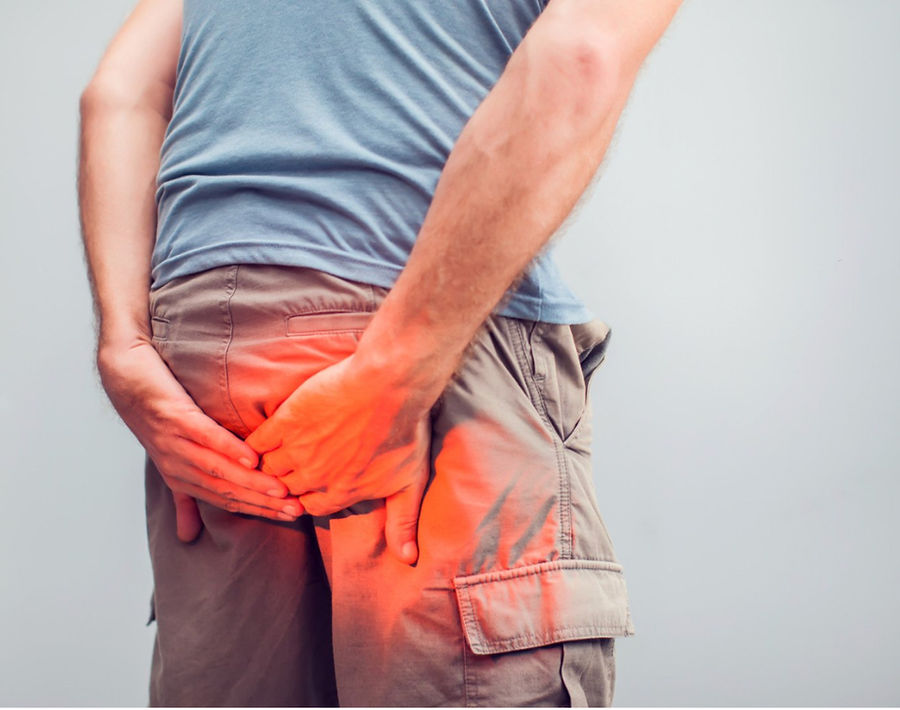Hemorrhoids In Dubai, commonly known as piles, are swollen veins in the lower rectum and anus. They can be classified into two main categories based on their location: internal and external hemorrhoids. Each type has distinct characteristics, symptoms, and treatment options. Understanding the differences between these types is essential for effective management and treatment.
1. Internal Hemorrhoids
Description
Internal hemorrhoids are located inside the rectum and are generally not visible from the outside. They develop above the anal canal and are covered by a layer of rectal mucosa. This type of hemorrhoid typically does not cause pain because the area lacks pain receptors.
Symptoms
- Bleeding: The most common symptom of internal hemorrhoids is painless bleeding during bowel movements. You may notice bright red blood on toilet paper, in the toilet bowl, or mixed with stool.
- Prolapse: Internal hemorrhoids can sometimes protrude through the anus, a condition known as prolapsed hemorrhoids. When this happens, they may become painful and swollen.
- Mucus Discharge: Some people may experience a mucus discharge from the rectum, which can lead to irritation and itching.
Treatment Options
- Conservative Management: High-fiber diets, increased fluid intake, and over-the-counter topical treatments can help relieve symptoms.
- Minimally Invasive Procedures: Procedures like rubber band ligation, sclerotherapy, and infrared coagulation may be recommended for more severe cases.
- Surgery: In cases where conservative treatments fail, surgical options like hemorrhoidectomy or stapled hemorrhoidopexy may be necessary.
2. External Hemorrhoids
Description
External hemorrhoids are located under the skin around the anus. They are more visible than internal hemorrhoids and can be felt as lumps or swelling around the anal area. This type of hemorrhoid is more prone to pain because it is covered by sensitive skin.
Symptoms
- Pain and Discomfort: External hemorrhoids often cause significant pain, especially during bowel movements or when sitting.
- Swelling: A lump or swelling around the anus can indicate the presence of external hemorrhoids. This swelling may feel hard or tender.
- Itching and Irritation: External hemorrhoids can cause itching and irritation in the anal region due to inflammation and swelling.
- Bleeding: Like internal hemorrhoids, external hemorrhoids can also cause bleeding, particularly if they become thrombosed (when a blood clot forms inside the hemorrhoid).
Treatment Options
- Home Care: Warm baths, topical treatments, and pain relievers can help alleviate symptoms.
- Minimally Invasive Procedures: In cases of thrombosed external hemorrhoids, a healthcare provider may perform a procedure to remove the clot and relieve pain.
- Surgery: Severe cases may require surgical intervention, especially if the hemorrhoids do not respond to other treatments.
3. Thrombosed Hemorrhoids
Description
Thrombosed hemorrhoids occur when a blood clot forms within an external hemorrhoid. This can happen suddenly and is often associated with intense pain and swelling.
Symptoms
- Sudden Pain: The most notable symptom is severe pain around the anus, often described as a sharp or throbbing sensation.
- Visible Lump: A hard, blueish lump may be visible near the anal opening, indicating the presence of a clot.
- Swelling and Inflammation: The surrounding area may be swollen and inflamed, causing additional discomfort.
Treatment Options
- Immediate Care: Warm compresses and over-the-counter pain medications can help manage symptoms.
- Surgical Intervention: If the pain is severe or if the thrombosed hemorrhoid does not resolve, a healthcare provider may need to surgically remove the clot.
4. Prolapsed Hemorrhoids
Description
Prolapsed hemorrhoids are internal hemorrhoids that have descended through the anal opening, often becoming visible externally. This can occur during straining or bowel movements.
Symptoms
- Visible Bulge: Prolapsed hemorrhoids may appear as a bulging tissue mass outside the anus.
- Pain and Discomfort: Prolapsed hemorrhoids can cause pain, particularly if they become trapped or inflamed.
- Bleeding and Irritation: Similar to other types of hemorrhoids, prolapsed hemorrhoids may lead to bleeding and itching.
Treatment Options
- Manual Reduction: In some cases, the hemorrhoid can be pushed back into place.
- Conservative Management: Dietary changes and home treatments may help alleviate symptoms.
- Surgical Options: For severe cases, surgical procedures may be required to remove the prolapsed tissue.
Conclusion
Understanding the different types of hemorrhoids—internal, external, thrombosed, and prolapsed—is essential for effective diagnosis and treatment. Each type has its symptoms and treatment options, ranging from conservative home care to surgical interventions. If you experience symptoms of hemorrhoids, it is important to consult a healthcare provider for a proper diagnosis and tailored treatment plan.






Comments